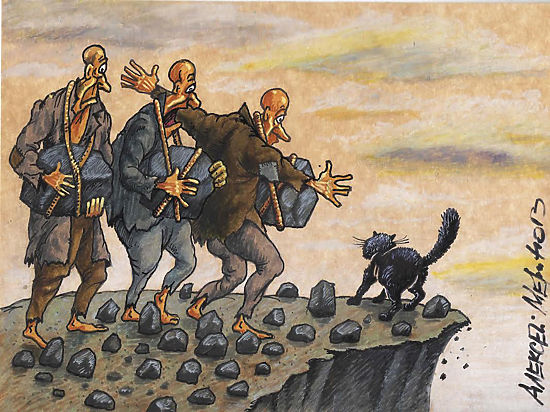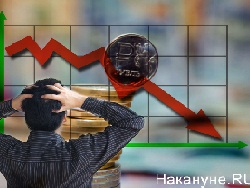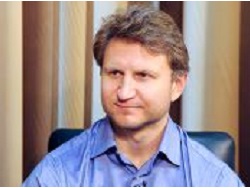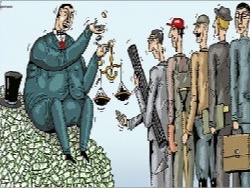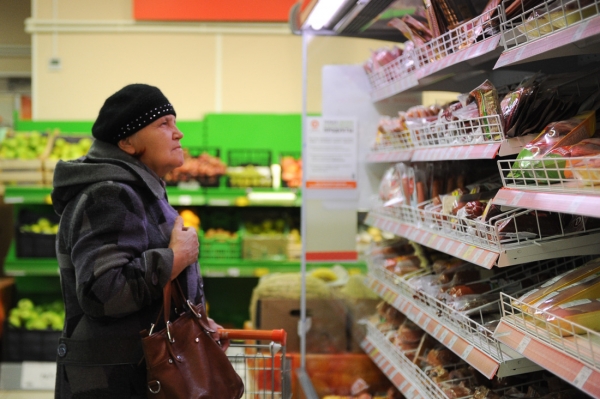 How did life in Russia
How did life in Russia
Two years ago against Russia imposed sanctions. Then no one scared. Remember all those jokes about “do Not tell my Iskander”. But as time has shown, the consequences of the sanctions were being felt by almost all.
The first package of anti-Russian sanctions imposed in mid-March 2014, when the Crimea became part of Russia. In April and may because of the war in Eastern Ukraine, the West imposed a second package of sanctions. The third was introduced in June after the crash of the Boeing in the Donetsk region.
The sanctions list is huge, they mainly related to trade and visa restrictions, denial of civil, economic and military cooperation, the termination of funding of Russian organizations.
Advisor to the President of Russia Sergey Glazyev, recently stated that the losses of Russia from sanctions of the West for two years was estimated at 250 billion dollars. It 17,250 trillion — 2 trillion rubles more than the Russian budget for 2015.
These are the main, but few of the implications which turned ordinary Russians for two years of sanctions and the subsequent crisis.
EMPLOYMENT
In the fall of 2014, employers have almost ceased to look for new employees and stopped for a raise in salary. Workers began stronger to hold on to their jobs. In September of this year the average unemployment rate for the country was 4.9%.
In early 2015 Rosstat averaged 5,5% of the unemployed (4.2 million people). And at the end of 2015 was 5.8 per cent (4.4 million people). By this time, more than 2.2 thousand enterprises stated that they have suspended from work, working part-time or sent on indefinite leave by the staff. Just for 2015 was reduced approximately to 633.3 thousand people.
In 2015, experts Thomas recorded a growth of protest activity in industrial enterprises it is 45%. For the first six months of 2015 at the Russian enterprises occurred 189 labor protests.
Interestingly, in the oil and gas sector cuts was not. LUKOIL, for example, say that to reduce the number of people employed in the mining, processing and trading, there is no reason. On the contrary, they have a growing number of drilling crews. Many cuts had on the enterprises of small and average business, the vast majority of them came in the beginning of 2015. And by the end of 2015 was calculated, where reduced the most: in the suburbs — 45% of employees in Moscow — 30%, in Yaroslavl region — 20%. Now layoffs are 631 thousand people.
It is important to understand that this is the official statistics, the real situation is much worse.
SALARY
In 2014 the average monthly nominal salary in Russia was $ 32 500 rubles. In 2015, it rose to almost 34 000. The only problem is that due to inflation and depreciation of the ruble has decreased its purchasing power. If in 2014 she has reached 101.2% of the average monthly salary of the previous year (i.e. increased by 1.2%), in 2015 it amounted to 90.7 per cent (i.e. fell by almost 10%).
The biggest decline in the purchasing power of wages occurred in may 2014. Compared to may 2013 it was 14%. Last time it was in 1998.
BUYING BEHAVIOR
With the imposition of sanctions and the beginning of a rapid increase in inflation, the Russians started to spend more on products. If in developed countries people spend on food 12-18% of income, us — 46%. At the same time the Russians started to a greater extent to promote one’s own farm and grow his own vegetables and fruits. In 2014, 39%, and in 2015 they became much more — 46%.
Over the past year people have less to spend on household chemicals: now they get the Soaps, powders and shampoos cheaper brands. 8% sales decreased white and yellow cheese, cheap sausage but the cheese became more popular at 24%, processed — 10%. Less steel to buy meat, fish and seafood, but cereals, pasta, flour and sugar began to be in great demand. Also in the last year-a 39% increase in trade sales.
In recent months, people try not to spend my salary, not to make major purchases, not to take the money. Many take savings from banks.
PICTURES
With the fall of the ruble in Russia began to rise rapidly food prices. Over the last two years the inflation rate was 24,27%, but for some products the price has grown much stronger. For example, from August 2014 to August 2015, cod fillets rose by 20-100% (depending on the store).
Milk has risen in price by 10-20%, chicken 5% -15%, pork by 10-15%, sausages by 10-50%. Strongly increased prices for vegetables: cabbage rose by 13%, beet by 10-25%, carrots 10%, peppers by 40-70%. Fruit most apples have risen by 25-40%, bananas at 17-27%, oranges at 20-80%.
SAVINGS
At the end of 2015 NAFI conducted another survey. Then 48% of people said that the inflation has caused damage to the family budget, but did not affect the food. Another 37% said rising prices have affected them greatly and they are forced to limit their spending on products.
48% of Russians with the advent of the crisis refused to leave, 39% save on clothing and shoes, 38% visiting the cinema and restaurants. 23% abstain from receiving guests and relatives, 22% from the treatment and 20% from buying necessary food items.
POVERTY
In conducting its research, the VCIOM all divided Russians into three groups:
— successful people who still feel the effects of the crisis;
wrestling people who noticed that has gotten worse, but cope with adversity;
— people are suffering, experiencing the full brunt of the crisis and have no way to fight it.
In November 2014, the group affected was 16% of the adult population. By January 2015 it increased sharply to 47%. In October 2015 it was 60%.
In 2013, the income below the subsistence minimum was 9% of the population (12.5 million people). In 2014, there were 14% (19.8 million), and in 2016 — 16% (about 23 million). The reasons for this rapid growth — high inflation: if in 2014 you could stay at 7 688 rubles, a year later, was required for 9 662 rubles.
Experts say that the bulk of the poor are employable adults. Such a paradox happens due to the fact that in Russia is very common to work with low wages. In order to reach the poverty line, he shall receive a salary equivalent to 1.5 minimum subsistence level, — about 15 thousand rubles. But according to statistics, about a quarter of Russians working salary is less than this amount. The minimum wage in Russia — 5 965 rubles, i.e. 1,5 times more, and almost half of the subsistence minimum.
THE WEAKENING OF THE RUBLE
It began back in 2014 after the fall in oil prices and the introduction of anti-Russian sanctions. If on January 1, 2014 the US dollar was 32,66 rubles, and Euro — 45,06, from January to March 2014, the ruble depreciated by 14.9 %: dollar cost more than 37 rubles, and Euro rose above 51 ruble. These were the highest figures since the crisis of 2009.
The fall of the ruble continued, and on 15 December there was a sharp collapse: the courses and 78,87 $ 64,45 rubles per dollar and Euro. This day in media called “black Monday”. The next day, Tuesday, December 16, the ruble fell even more: the dollar and Euro exchange rates reached 79 and 98 rubles. This day was called “black Tuesday”. By the end of 2014, the ruble, according to Bloomberg, was the worst currency of the year.
In 2015, the ruble weakened and strengthened, keeping within the course of 50-70 per dollar and per Euro 53-80. The New year the ruble has become weak again, and in January 2016, several times updated the minimum value since “black Tuesday” of December 2014.
MOOD
After the return of Crimea to Russia and the imposition of counter-sanctions Putin’s approval rating increased significantly. In August he was ready to vote 57% of respondents (excluding from the mass of undecided and do not intend to vote, 87%). Did not approve of Putin’s performance only 15% of respondents. To the question “the Country is moving in the right direction?” an affirmative answer was given by 64% of respondents, and negative — 22%.
In October 2015 their approval to Putin expressed already 89,9% of respondents — a record figure for Russia. This rise of popular location was associated with the beginning of military operation in Syria. In January 2016 the trust rating of the President was at the level of 85%.
A small drop in the rating of the President is associated with the complexity of the economic situation. It refers not specifically to the President and all authorities. 55% of Russians do not believe that the government has a plan to rescue the economy.
Ilya Varlamov

